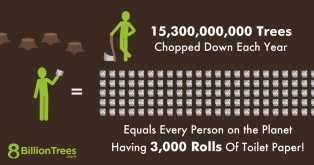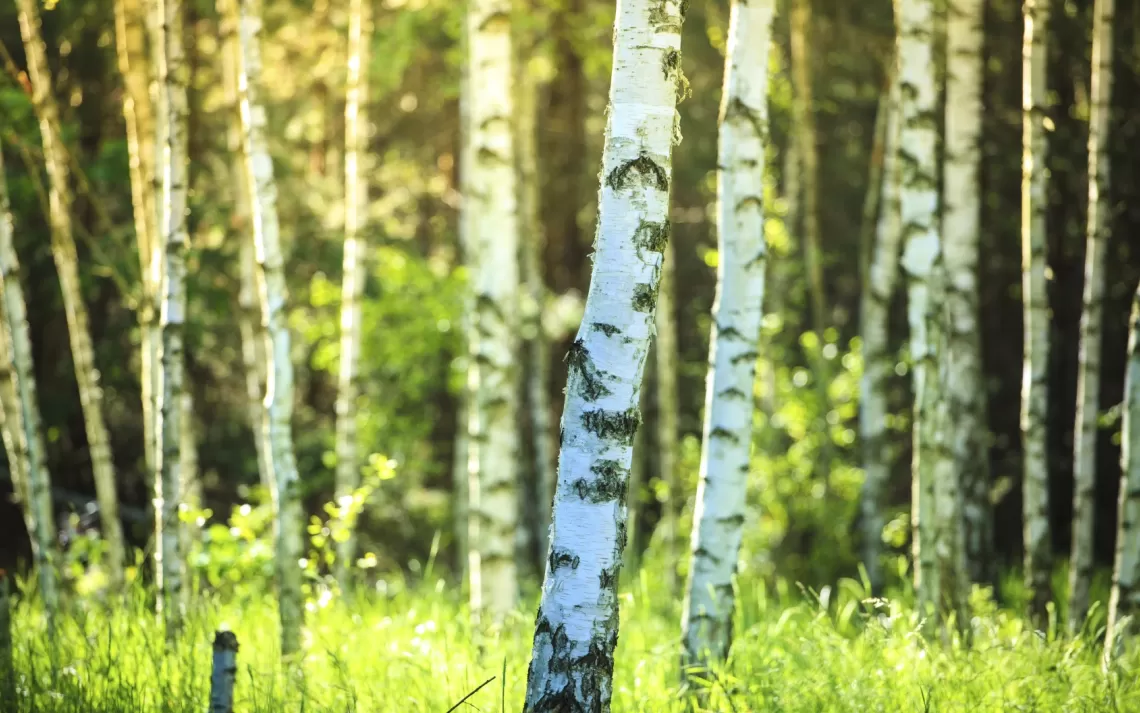
Have you ever wondered how many pages can be produced from a single tree? You may be surprised to learn that the answer is quite astonishing. Trees play a vital role in our ecosystem, providing us with oxygen, shade, and even materials for various products, including paper. In this article, we will explore the process of paper production and delve into the fascinating world of tree-to-page transformation.
When it comes to paper production, trees are the primary source of fiber. The process begins with harvesting trees from sustainably managed forests. The trees are then transported to paper mills, where they undergo a series of steps to extract the wood fibers. These fibers are mixed with water to create a pulp, which is then pressed and dried to produce paper.
But just how many pages can be obtained from a single tree? The answer varies depending on several factors, including the type of tree and the size and thickness of the paper. On average, a single tree can produce around 8,333 sheets of copy paper, which is equivalent to approximately 16 reams or 1 full carton. It’s important to note that this estimation is based on standard copy paper of
- The Importance of Trees for Paper Production
- Tree Lifespan and Paper Output
- Factors Affecting Paper Production from Trees
- Types of Trees Used for Paper Production
- Pine Trees
- Spruce Trees
- Environmental Impact of Paper Production
- Sustainable Practices in Paper Production
- FAQ:
- How many pages can one tree produce?
- What type of tree is commonly used for paper production?
- Is paper production harmful to the environment?
- Can paper be made from sources other than trees?
- What are some alternatives to using paper?
The Importance of Trees for Paper Production

Trees play a crucial role in the production of paper. They are the primary source of raw materials used in the manufacturing process. Without trees, it would be impossible to produce the vast amount of paper that is used daily around the world.
One of the main reasons why trees are important for paper production is their ability to provide wood fiber. Wood fibers are extracted from trees through a process called pulping, in which the wood is broken down into small pieces and then treated with chemicals to separate the cellulose fibers. These fibers are then used to make paper sheets.
Trees also contribute to the quality and strength of paper. Different types of trees have different fiber characteristics, such as fiber length and strength, which can affect the properties of the paper produced. The choice of tree species and fiber quality can impact factors such as the durability, texture, and printability of the final paper product.
Furthermore, trees have a significant impact on the environment. They absorb carbon dioxide and release oxygen through the process of photosynthesis, helping to reduce the levels of greenhouse gases in the atmosphere. By converting carbon dioxide into oxygen, trees help to mitigate climate change and improve air quality.
Moreover, trees provide habitat for a wide variety of wildlife. Forests are home to countless species of animals, birds, insects, and plants. Deforestation for paper production can lead to the loss of biodiversity and disrupt ecosystems. It is important to strike a balance between the demand for paper and the need to preserve forests and the environment.
In conclusion, the importance of trees for paper production cannot be overstated. They are not only a renewable resource but also provide crucial raw materials and contribute to the quality of paper products. Protecting and conserving trees and forests is vital for sustainable paper production and maintaining the health of our planet.
Tree Lifespan and Paper Output

The lifespan of a tree is an important factor to consider when evaluating its paper output. Different tree species have varying lifespans, ranging from several decades to several centuries. This longevity directly affects the amount of paper that can be produced from a single tree.
For example, fast-growing trees such as the eucalyptus or bamboo can be harvested for paper production in as little as five to seven years. These trees have relatively short lifespans compared to other hardwoods, making them an efficient choice for paper production.
On the other hand, slow-growing trees like the oak or maple have much longer lifespans, often spanning several decades or even centuries. Due to their extended growth periods, these trees produce a lower paper output compared to the faster-growing varieties.
It’s also important to note that the age at which a tree is harvested for paper production can impact the paper output. Generally, trees are harvested when they have reached their maximum growth potential, ensuring that the wood fibers used for paper are of the highest quality. If a tree is harvested too young, the paper output may be lower due to the underdeveloped fibers.
Considering the lifespan of a tree and its paper output is essential for sustainable paper production. By selecting tree species with shorter lifespans or by utilizing regenerative forestry practices, it is possible to minimize the environmental impact while meeting the demand for paper products.
In conclusion, understanding the relationship between tree lifespan and paper output is crucial in making informed decisions about sustainable paper production. By considering these factors, we can contribute to the conservation of our forests while ensuring a steady supply of paper for various purposes.
Factors Affecting Paper Production from Trees
There are several factors that influence the production of paper from trees. Understanding these factors is essential in sustainable and efficient paper production processes. Here are some key factors to consider:
1. Tree Species: Different species of trees have varying fiber properties, which directly affect the quality and efficiency of paper production. Softwood trees, such as pine and spruce, are commonly used for producing paper due to their long and strong fibers.
2. Tree Age: The age of the tree has a significant impact on the quality and quantity of paper that can be produced. Younger trees tend to have shorter fibers, which are more suitable for producing fine paper products, while older trees have longer fibers that are used in the production of coarse paper and packaging materials.
3. Fiber Yield: The yield of usable fibers obtained from trees greatly influences the paper production process. Factors such as the density and size of the tree, as well as the harvesting method, affect the overall fiber yield. Efficient harvesting and processing techniques can maximize fiber yield, reducing waste and increasing the productivity of paper production.
4. Environmental Impact: Environmental factors, such as climate, soil conditions, and pollution, also play a crucial role in paper production from trees. Trees located in regions with favorable climate conditions and healthy soil yield better quality fibers, resulting in higher-quality paper. Additionally, sustainable forestry practices that minimize pollution and protect biodiversity are essential for responsible paper production.
5. Technological Advancements: Advances in technology have had a significant impact on paper production from trees. Innovations in equipment and machinery have improved efficiency, reduced energy consumption, and minimized waste in the paper production process. Additionally, advancements in pulping and bleaching techniques have resulted in higher-quality paper products with reduced environmental impact.
By considering these factors and implementing sustainable practices, the paper industry can ensure responsible and efficient utilization of trees for paper production. Prioritizing the protection of forests and the environment while meeting the growing demand for paper is crucial for a sustainable future.
Types of Trees Used for Paper Production
There are several types of trees that are commonly used for paper production. These trees are specifically grown and harvested for the purpose of making paper. Here are some of the most common types of trees used:
Pine Trees
Pine trees, particularly species from the Pinus genus, are commonly used for paper production. They are known for their long and straight fibers, which make them ideal for creating strong and durable paper. Pine trees are also fast-growing, which makes them a sustainable choice for paper manufacturers.
Spruce Trees
Spruce trees, commonly found in North America and Europe, are also popular choices for paper production. They have strong and flexible fibers that contribute to the strength of the paper. Spruce trees also grow relatively quickly, making them a viable option for sustainable paper production.
In addition to pine and spruce trees, other types of trees that are used for paper production include fir trees, eucalyptus trees, and birch trees. Each type of tree has its own unique characteristics that make it suitable for different types of paper products.
It’s important to note that the majority of paper produced today comes from tree farms rather than natural forests. These tree farms are carefully managed to ensure sustainable and responsible paper production.
By understanding the types of trees used for paper production, we can appreciate the efforts made to balance the demand for paper with the need to preserve forests and promote sustainability.
Environmental Impact of Paper Production
Paper production has a significant environmental impact, contributing to deforestation, habitat destruction, and water pollution. The demand for paper has led to the unsustainable logging of forests, which has devastating effects on biodiversity and the ecosystem as a whole.
Deforestation, which is primarily driven by the paper industry, leads to the loss of millions of acres of forest every year. Trees are essential for providing oxygen, removing carbon dioxide from the atmosphere, and preserving the overall balance of our planet’s climate. When forests are cleared for paper production, these vital functions are compromised, and greenhouse gas emissions increase.
In addition to deforestation, paper production also has a negative impact on water resources. The process of turning trees into paper requires large amounts of water, and often, this water is contaminated with harmful chemicals used in the production process. As a result, water pollution occurs, affecting aquatic life and compromising the quality of drinking water sources.
The environmental impact of paper production can be mitigated through sustainable practices and the use of alternative materials. Recycling paper reduces the demand for new paper products and decreases the need for logging. Additionally, using alternative fibers, such as bamboo or hemp, can help reduce the reliance on trees for paper production.
It is crucial for both individuals and businesses to be aware of the environmental impact of paper production and to make conscious choices to reduce their paper consumption. By opting for digital documentation, practicing recycling, and supporting sustainable paper production, we can all contribute to preserving our planet’s precious resources and reducing our ecological footprint.
Sustainable Practices in Paper Production

Paper production is a major industry worldwide, and it is essential to ensure that it is done in a sustainable and responsible manner. Here are some sustainable practices that are employed in paper production:
| Practice | Description |
|---|---|
| Tree Plantations | Many paper producers maintain tree plantations specifically for the purpose of producing paper. These plantations are carefully managed to ensure proper tree growth and to promote environmental sustainability. |
| Recycled Paper | A significant portion of paper production now involves the use of recycled paper. This helps reduce the demand for fresh raw materials and conserves natural resources. |
| Efficient Machinery | Paper production facilities invest in energy-efficient machinery and technologies to reduce the environmental impact of production. This includes using machinery that consumes less water and energy. |
| Responsible Sourcing | To ensure sustainability, paper producers prioritize responsible sourcing of raw materials. This involves working with suppliers who practice sustainable forestry and follow strict environmental guidelines. |
| Waste Reduction | Paper production facilities implement waste reduction measures to minimize the amount of waste generated during the production process. This includes recycling or repurposing paper waste and optimizing production processes to reduce waste. |
| Environmental Certifications | Many paper producers obtain environmental certifications such as Forest Stewardship Council (FSC) certification, which ensures that the paper has been sourced from responsibly managed forests. |
By adopting these sustainable practices, the paper production industry can mitigate its environmental impact and contribute to a more sustainable future.
FAQ:
How many pages can one tree produce?
One tree can produce around 8,333 sheets of paper, which typically equals 16 reams or 80,000 sheets.
What type of tree is commonly used for paper production?
The most commonly used tree for paper production is the eucalyptus tree, as it grows quickly and has long, straight fibers.
Is paper production harmful to the environment?
Yes, paper production can be harmful to the environment as it involves cutting down trees and can lead to deforestation. However, there are efforts being made to promote sustainable forestry practices and use recycled paper.
Can paper be made from sources other than trees?
Yes, paper can be made from sources other than trees. Some examples include bamboo, hemp, and agricultural waste such as straw and sugarcane bagasse.
What are some alternatives to using paper?
Some alternatives to using paper include digital documents, electronic communication, and reusable materials like whiteboards and chalkboards.